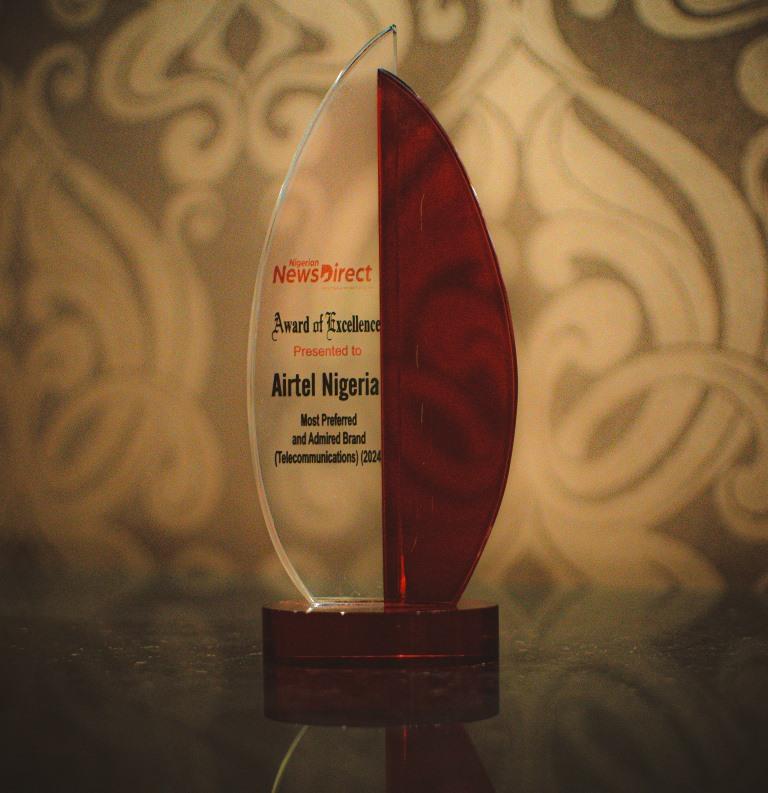Brands/Products
Iconic Marketing Campaigns That Stood Out From the Crowd

While we may not like to admit it, we’re all susceptible to the marketing and advertising efforts of companies. If we weren’t, we wouldn’t own many of the products we do today.
Advertising and marketing executives work hard to create campaigns that are emotive, humorous and memorable, in the hopes that it will encourage us to spend money on their product or service.
These campaigns pay for many of the things we take for granted. TV shows are paid for by the advertisements that run during commercial breaks, public transport is subsidised by the ads on the sides of buses and inside trains, and social media sites wouldn’t be free if they weren’t funded by sponsored posts and ads on the side of the screen. They work too, ads on Facebook are some of the most effective ways to promote a business.
The best campaigns are ones that make us laugh or feel emotional, stick in our minds, and get us talking. Here are some of those iconic campaigns.
Apple’s Get a Mac Campaign
The Apple we know today is a giant in the tech industry and one of the wealthiest companies in the world. It wasn’t always the case though. In the 1990s, the company was on the brink of collapse after a string of failed products like the Newton.
Steve Jobs’ return to the company changed that, launching the iMac in August 1998 followed by other successful products like the iPod, iPhone and iPad.
By 2006, the company was in a much strong position and was ready to take on its biggest rival, Microsoft. It did this through a series of ads called “Get a Mac” that personified Windows and Mac computers, the former as a boring office worker and the latter as a cool, younger person.

These ads ran until 2010 and were a huge success, helping Apple to increase its Mac sales by almost 40%.
It even spawned a series of parody videos, such as the “iPod vs Zune” and “PS3 vs Wii”.
PokerStars’ I’M IN Campaign
People have been playing poker and similar games for hundreds of years, but the internet helped to make it more accessible to millions of more players in the 2000s. The game has a widespread appeal that spans generations, social classes, and geographic borders, meaning you could everyone from retired investment bankers and computer programmers to dancers and teachers.
This was something that PokerStars, one of the world’s biggest online poker platforms, set to celebrate with its I’M IN campaign. The campaign was put together following extensive research among its community of poker players and was designed to demonstrate that the company provides a trusted environment for them to enjoy the game in. PokerStars launched the campaign with a 60 second TV ad, backing it up with a string of shorter ads shown in several key markets and a selection of digital assets used online.
British Heart Foundation’s Hands-Only CPR Campaign
In 2010, St John Ambulance warned that as many as 150,000 people could be dying each year because they do not receive first aid quickly enough. It highlighted the alarming fact that almost one-quarter of people said they would “do nothing” if they saw someone struggling, either waiting for an ambulance or hoping someone else knew first aid.
An additional 59% said they would “not feel confident trying to save a life”.
To combat these shocking statistics, the British Heart Foundation ran an advertising campaign in the UK called “Hands-Only CPR”.
Featuring Vinnie Jones, a British footballer and actor known for playing hard-nut criminals in his movies, the ad instructed people on how to perform hands-only CPR.
In the ad Jones says “no kissing…you push hard and fast…to Stayin’ Alive”. Then the Bee Gees song, Stayin’ Alive begins to play while Jones performs chest compressions.
While talking about a serious subject, the British Heart Foundation was able to create a memorable, humorous ad that would stick in the minds of viewers.
It worked because the instructions were simple and the song is one that is almost universally recognised.
Shortly afterwards, the American Heart Association also used the song in its “Keep The Beat” campaign, proving the merits of the song.
Brands/Products
Airtel Nigeria Wins Most Preferred Telecom Brand Award

By Modupe Gbadeyanka
Another award has been added to the shelves of Airtel Nigeria for the quality service it offers its numerous subscribers.
At the 14th Nigerian NewsDirect Awards held at the Lagos Oriental Hotel on Friday, December 6, 2024, the company went home with the Most Preferred and Admired Telecommunications Brand award.
The chief executive of Airtel Nigeria, Mr Dinesh Balsingh, thanked the news platform for the recognition, reiterating the dedication of the organisation towards the growth of Nigeria.
“At Airtel, we remain steadfast in our mission to enrich lives and contribute to the sustainable growth of our nation, and we are proud to receive this award as the Most Preferred and Admired Telecommunications Brand.
“This recognition reaffirms our commitment to connecting Nigerians, driving digital inclusion, and empowering communities through innovative solutions,” he said.
The ceremony, themed Achieving Economic Prosperity: The Role of Human Capacity Development, Fiscal Prudence, and Revenue Generation, celebrated outstanding contributions made by individuals and corporate organisations to national development across sectors and industries.
The chairman of Odu’a Investment Limited, Mr Bimbo Ashiru, thanked all participating entities for their “continuous contributions and support to the nation’s growth.”
“You have demonstrated excellence and have significantly contributed to Nigeria’s progress and we believe this platform will continue to highlight and encourage best practices across industries,” he stated.
The event attracted several persons, including the chairman of the Lagos State Internal Revenue Service (LIRS), Mr Ayodele Subair; and the Registrar-General of the Corporate Affairs Commission (CAC), Mr Hussaini Ishaq Magaji; among others.
Brands/Products
Rite Foods Backs 2024 Ibadan Chops, Chills Festival

By Modupe Gbadeyanka
The second edition of the Ibadan Chops and Chills Festival held on December 1, 2024, received the backing of Rite Foods Limited.
It was a platform for young entrepreneurs, food vendors, and entertainers to showcase their talents and promote the rich cultural heritage of Oyo State in particular, and Nigeria in general.
Rite Foods used the event to foster growth and innovation among enterprising youths in society in demonstration of its commitment to youth empowerment and community engagement.
The Corporate Communications Manager at Rite Foods, Mr Innocent Adulugba, said, “As a manufacturing company driven by innovation, Rite Foods Limited believes in the power of young people and the importance of providing platforms that enable them to showcase their skills and talents.”
“The Ibadan Chops and Chills Festival aligns with our mission to inspire, support, and add value to talents and entrepreneurs across Nigeria,” he added.
“Rite Foods Limited recognizes the Ibadan Chops and Chills Festival as a platform for growth and that is why the company is here today to leverage support so the participating food exhibitors can benefit via joint marketing efforts, co-promotions, and expanded distribution channels under one roof,” Mr Adulugba stated.
“We are partnering with food vendors to offer consumers a more comprehensive and enjoyable experience, such as pairing beverages like Bigi, Sosa or Fearless with complementary food options of their choice,” he noted.
Also speaking, the convener of the programme, Ms Chinwendu Festus of Wendy’s Kitchen, said, “The first edition of Ibadan Chops and Chills was a success, which inspired us to aim higher this year.
“Our goal is to provide young people with the space to showcase their culinary talents, grow their businesses, and connect with a broader audience.”
The Commissioner for Youth and Sports, Ms Wasilat Adefemi Adegoke, stated, “This initiative is one of the best I have seen. It aligns perfectly with our administration’s goals of empowering the youth, promoting cultural heritage, and fostering talent.”
It was gathered that the festival featured cooking competitions, entertainment shows, guest tours and vendor exhibitions, which highlighted the diversity and ingenuity of participants and the diversity of food options on display.
Brands/Products
Why Waste Your Subscription? Here’s How to Get the Best of it!

In this economy, you can’t be paying for things and not getting the full value. Unfortunately, that’s how most cable TV subscribers feel. It’s like there’s a lot on TV, but nothing for you. Here’s a solution to that problem. We’ve taken the time to sieve through everything, so you don’t have to. Here are a few tips to help you make the most of your GOtv subscription during the holidays.
Take Advantage of the Golden Window Offer: The best entertainment sits on GOtv Supa Plus – and there’s an easy step to get there. To celebrate, GOtv is extending the Golden Window deal for Supa+ subscribers. Instead of paying the regular ₦15,700, you can now enjoy the Supa+ package for just ₦13,900. That’s where all the Premier League games sit. There’s a game almost every day this period. You also get Africa Magic Showcase for a little family drama – relive the easy-to-watch TV series, suitable for the family. Don’t miss out on this premium offer; take advantage of the savings while you can.
Check Out New Channels: Why not try something new and explore different channels this Christmas? It’s a great chance to step outside your usual picks and discover some festive gems and fresh content you might not expect. From comedy specials to music concerts. For example, the Holiday Pop-Up Channel will have the most recent stand-up comedy show from Nigeria’s best stand-up Comedian – Bovi — Christmas with Bovi (December 24th–26th). It’s also better to watch the Calabar Rocks Music Concert, Naija Most Wanted, and the Akwa Ibom Christmas Carols Festival 2024 on TV than under the sun.
Set Reminders for Special Movies and Shows: With all the festive activities going on, it’s easy to forget and get lost in pointless scrolling online. A simple reminder can remind you to take a break from triggering social media posts and enjoy wholesome entertainment on TV. From new Africa Magic originals like ‘The Jump’ and ‘10th Anniversary’ to classic favourites like Bad Moms and Problem Child – a classic, there’s so much to enjoy. Set those reminders so you can enjoy all the festive cheer without the fear of missing out.
Host Watch Parties: The holidays are all about spending time with loved ones, and what better way to do that than by hosting a watch party? With your GOtv subscription, you’ve got everything you need for a fun-filled day. Picture this: Christmas Day, surrounded by family and friends, all gathered together to enjoy the Bovi Comedy Special—Christmas with Bovi. Whether it’s a comedy special, a classic holiday movie, or the latest Africa Magic original, there’s something to bring everyone together. So, make it a date, prepare the Christmas rice and chicken, and enjoy.
Stream Online via the GOtv App: During the festive season, homes are often buzzing with family members coming together to celebrate. If your household is anything like this, the battle for control of the remote and deciding what to watch can get intense. To avoid the remote wars, you can make use of the GOtv Stream app. The real owners of the remote can watch what they want while you stream yours – everyone wins.
So, go ahead and subscribe now or upgrade to unlock the cheer and excitement of the season with GOtv. Take advantage of the GOtv Supa Plus Golden Window and pay just N13,900 instead of the usual N15,700.
To upgrade, subscribe, or reconnect, simply download the MyGOtv app or dial *288#. To catch up and for on-the-go viewing, don’t forget to download the GOtv Stream App and enjoy your favourite shows anytime, anywhere.
-

 Feature/OPED5 years ago
Feature/OPED5 years agoDavos was Different this year
-
Travel/Tourism8 years ago
Lagos Seals Western Lodge Hotel In Ikorodu
-

 Showbiz2 years ago
Showbiz2 years agoEstranged Lover Releases Videos of Empress Njamah Bathing
-

 Banking6 years ago
Banking6 years agoSort Codes of GTBank Branches in Nigeria
-

 Economy2 years ago
Economy2 years agoSubsidy Removal: CNG at N130 Per Litre Cheaper Than Petrol—IPMAN
-

 Banking2 years ago
Banking2 years agoFirst Bank Announces Planned Downtime
-

 Sports2 years ago
Sports2 years agoHighest Paid Nigerian Footballer – How Much Do Nigerian Footballers Earn
-

 Technology4 years ago
Technology4 years agoHow To Link Your MTN, Airtel, Glo, 9mobile Lines to NIN











